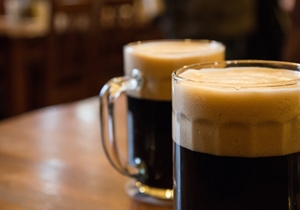 According to Transport for NSW, drink driving is a factor in around 20 per cent of all fatal accidents in the state, but a recent campaign has highlighted the improving attitudes of motorists.
According to Transport for NSW, drink driving is a factor in around 20 per cent of all fatal accidents in the state, but a recent campaign has highlighted the improving attitudes of motorists.
Operation Drink Drive 2 was conducted in early November, with authorities stopping and breath-testing drivers on NSW’s major highways as well as suburban and country roads. This year saw the operation open its net wider to test more motorists across a larger catchment area.
However, the statistics suggest more drivers are complying with the law, despite the increase in participants. Close to 220,000 motorists were tested (62,000 more than in the 2013 operation), yet just 131 drivers were charged with drink driving, down from 340 last year.
There was also fewer crashes over the three day window. Operation Drink Drive 2 was widely advertised on radio, television and online so more drivers were aware of the police presence and took notice. A total of 571 crashes were recorded in 2013, but this year saw only 279 major incidents.
NSW Police Force Traffic and Highway Patrol Acting Commander, Assistant Commissioner Stuart Smith noted that there was one fatality over the period which is still a concern.
“It still represents one family that has to cope with the sudden and devastating loss of a loved one,” he said.
“While the statistics for Operation Drink Drive 2 have been encouraging, with 209 fewer drink-drive charges, motorists appear to be getting the message, but more still needs to be done.”
As well as drink driving offences, NSW police issued over 7,000 traffic infringement notices and close to 2,000 motorists were picked up for speeding.
According to the NSW government, there are more than 26,000 drink driving offences recorded each year.
Interlock system
Despite the numbers of drink drivers decreasing in recent years, NSW still has a problem with repeat and serious offenders. In August, the state government passed legislation that allowed authorities to install interlock devices in the vehicles of repeat offenders.
The interlock devices are placed on the vehicle’s ignition and require drivers to pass a breath test before the engine will start. According to Minister for Roads and Freight Duncan Gay, more than 6,000 drink drivers could enter the program each year.
“We know drivers convicted of drink driving offences pose a particularly high risk to the community, with data showing one in six offenders could re-offend with a subsequent drink driving offence within five years,” he said in an August 14 media statement.
“Shocking statistics show people previously convicted of driving while intoxicated, are four times more likely to be involved in a fatal crash than the average driver – that’s why this program is so important.”
With the government legislation passed, the interlock system could become an mainstay option for authorities by early next year.
Recent examples
The recent Operation Drink Drive 2 highlighted a number of incidents that show how dangerous drink driving still is in the community. Although the rate is decreasing, people continue to offend and put other road users at risk as a result.
On the second night of the operation, police caught a man driving down a one way road. He was stopped and submitted a positive breath test. The man was then arrested and another reading gave an alleged 0.77 result.
He was given a Field Court Attendance Notice and an infringement notice for disobeying the No Entry Sign. What makes this an important case was that his wife and two young children were all present in the vehicle.
Impact on insurance
Offences such as drink driving not only impact the cost of insurance for offenders, they increase the cost of insurance for all road users.
Offenders will find that the cost of CTP green slip and comprehensive insurance will increase. Additionally, in most cases comprehensive insurance will not cover damage to the offenders vehicle or property.
your opinion matters: